If you are passionate about cars, you must have already come across the iconic Volkswagen air that have dominated the streets over the decades. From the legendary Beetle to rarer models like the Brasilia and SP2, air-cooled Volks always have a special place in the hearts of Brazilians and in the classic car market. But what few people know is that, despite their huge success in Brazil, many models Volkswagen air did not reach the Tupiniquin lands. And among these models, there is one that draws a lot of attention: the VW Type 4, also known as VW 412.
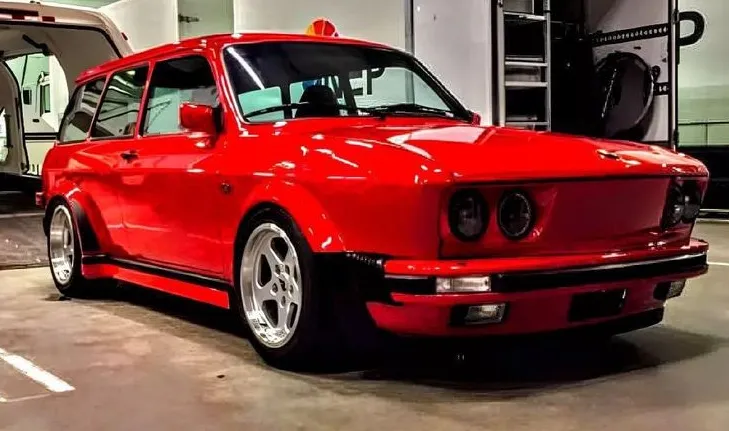
The VW Typ 4 was a large model, offered in versions fastback sedan It is station wagon (station wagon), and stood out for its unique design and advanced features for the time. Manufactured between 1968 and 1974, the model underwent some changes throughout its production. In the early years, the car was known as VW 411, equipped with a four-cylinder engine 1.7 liters which delivered about 80 hp. However, from 1972 onwards, the model received a larger engine, 1.8 liters It is 85 hp, and came to be called VW 412.
What really sets the VW Type 4 of other Volkswagen models, in addition to its larger size, is its design. The sloping front with double headlights and the more sophisticated finishing line ended up influencing the design of other cars manufactured by Volkswagen of Brazil, like the Brasilia, The Variant (in versions I and II) and the TL. These Brazilian vehicles, therefore, have a visual DNA that dates back to the Type 4, even though it was never officially marketed in Brazil.
The History of the VW Type 4: The Legacy of the Model 412 and Its Heritage
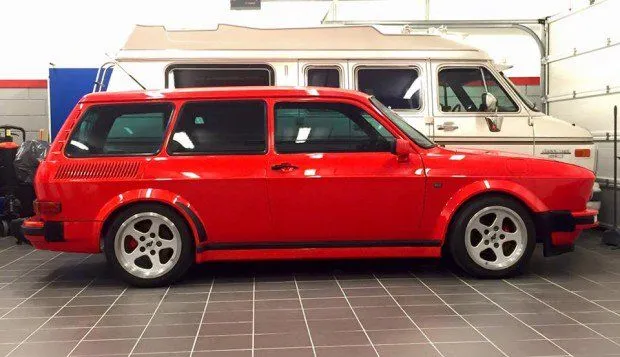
O VW Type 4 may not have been as popular a model as the Beetle or the Kombi, but its impact on Volkswagen's history and car design cannot be underestimated. aesthetic change What Volkswagen did to the Typ 4 with the introduction of dual headlights and the sloping front hood not only modernized the car's look, but was also a precursor of trends that influenced models such as the Brasilia. This adaptation in design reflected the automaker's desire to diversify its line of cars, creating vehicles with a more sophisticated appeal, without sacrificing reliability and simplicity.
However, what really stands out, especially for those who appreciate custom projects, is what happened to one of the few VW 412 remaining ones that were acquired in Europe. The owner of this car, a petrolhead Norwegian called Hans Olav Strand, decided to take the restoration project of his VW 412 to a whole new level. Inspired by a project he saw when he was still a child, Strand decided to do something few would dare: equip your VW 412 with a Porsche engine.
The Challenge of Putting a Porsche Engine in a VW Type 4: The Birth of the VW-Porsche 612 RS
Just imagine the scene: a VW 412 — a car originally designed to be a more family-friendly, rugged model — now equipped with an engine Porsche! This was the challenging project that Hans Olav Strand decided to face it. Since he was a child, Strand had dreamed of seeing a VW 412 with a Porsche engine, and now, decades later, he was making that dream a reality. The project was named “VW-Porsche 612 RS”, and the name already gives an idea of what was to come: a car that mixed the robustness of VW Type 4 with the sophistication and performance of a Porsche 911.
The main modification was the replacement of the engine. The engine of the Porsche 911 Carrera 3.2, one 3.2 liter flat-6, was installed in the VW 412, delivering power that probably exceeded the 300 hp. Originally, the Race 3.2 generated between 207 and 231 hp. However, after installing two turbochargers, O VW 412 began to have an impressive performance, which would certainly place it among the fastest cars of its time.
But it didn't stop there: the five-speed manual transmission that was placed in the VW 412 also comes from a First generation Porsche 911 Turbo, ensuring that the car had not only power, but also the dynamic behavior of a true Porsche. The disc brakes and other suspension components, which included the system McPherson (which was already more modern for the time), also came from Porsche 911, offering the VW 412 a mechanics that could never be compared to any other Volkswagen model.
Design: The Influence of Porsche on the Look of the VW-Porsche 612 RS
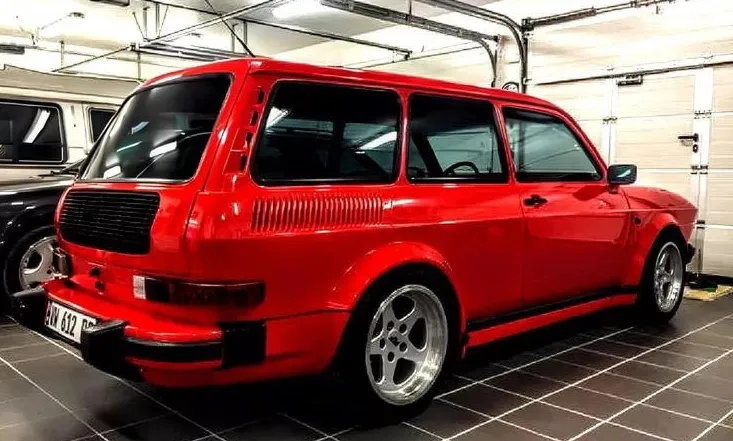
But mechanics was not the only focus of Hans Olav Strand's design. He wanted his VW 412 to also have the look of a Porsche. Therefore, he decided to adapt the Porsche 930 Turbo bumpers and widen the fenders of the model, creating a more aggressive and modern appearance for the car. The RUF wheels, with 17×9 It is 17×10 inches, gave the car a robust and imposing look, in true style “german look” which became popular among fans of tuned cars in Germany and, more recently, also in Brazil.
This sportier look was carefully crafted by Strand, who, as he himself said, wanted to create something that looked like what a model would look like. Porsche factory, if Volkswagen had decided to create a sports luxury model based on the VW Type 4.
The Interior of the VW-Porsche 612 RS: A Modern Twist on the Classic
When it comes to the interior, Strand maintained the idea of modernizing the car without losing the essence of the VW 412. The instrument panel of the Porsche 911 was installed without major adaptations, and the benches, which came from a Porsche 996 (the first generation with a water-cooled engine), were also placed inside the car. Strand's goal was to give the VW 412 a more modern and luxurious look, inspired by the models rebuilt by Singer Vehicle Design, a company known for creating Porsche 911 high-level custom products.
The interior of VW-Porsche 612 RS will feature modern features such as electric windows and locks, adjustable benches, air conditioning It is LED lighting. This ensures that, in addition to its impressive performance, the car is comfortable and functional, without giving up the classic charm of an air-cooled Volkswagen.
Design Legacy and Inspiration: What We Can Learn from the VW-Porsche 612 RS
The project of the VW-Porsche 612 RS is proof that a passion for classic cars can result in unique creations that combine history, design and performance impressively. Although in Brazil the idea of putting a Porsche engine in a Volkswagen air is not something common, what we see in this project is the desire to create something special, something that transcends what we would normally expect from a classic car.
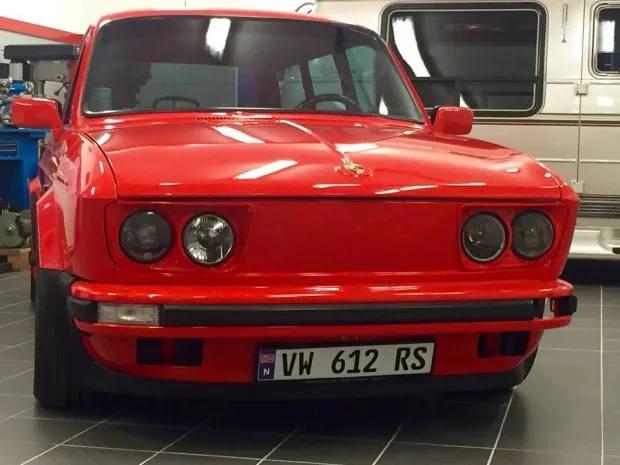
In a country like Brazil, where there is a huge variety of Volkswagen air, like the beetle, The Kombi and the Variant, what do you think about trying a similar project? Although finding a Porsche 911 is not an easy task, there are many possibilities for customize cars like the Variant II, giving them a unique and powerful touch, like the VW-Porsche 612 RS.
Even though this project has deep roots in Europe, it inspires us to explore the infinite customization possibilities that we have here in Brazil. reconstruction classics never lose their charm, and who knows, maybe soon you'll find yourself creating your own project, with a Porsche engine under the hood of a Volkswagen air.
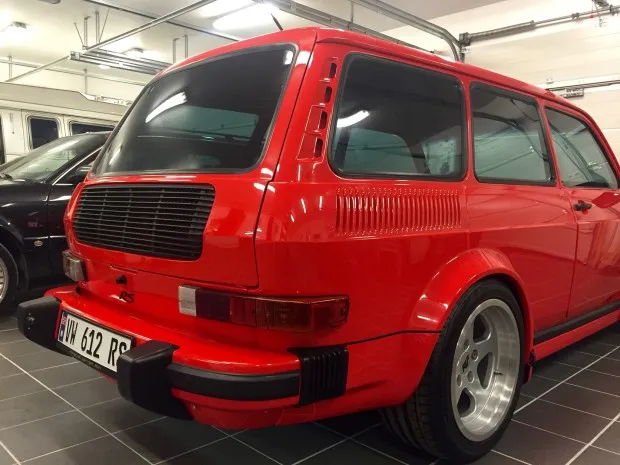
And in the end, isn't that what matters? The passion, the creativity and the search for something unique?









